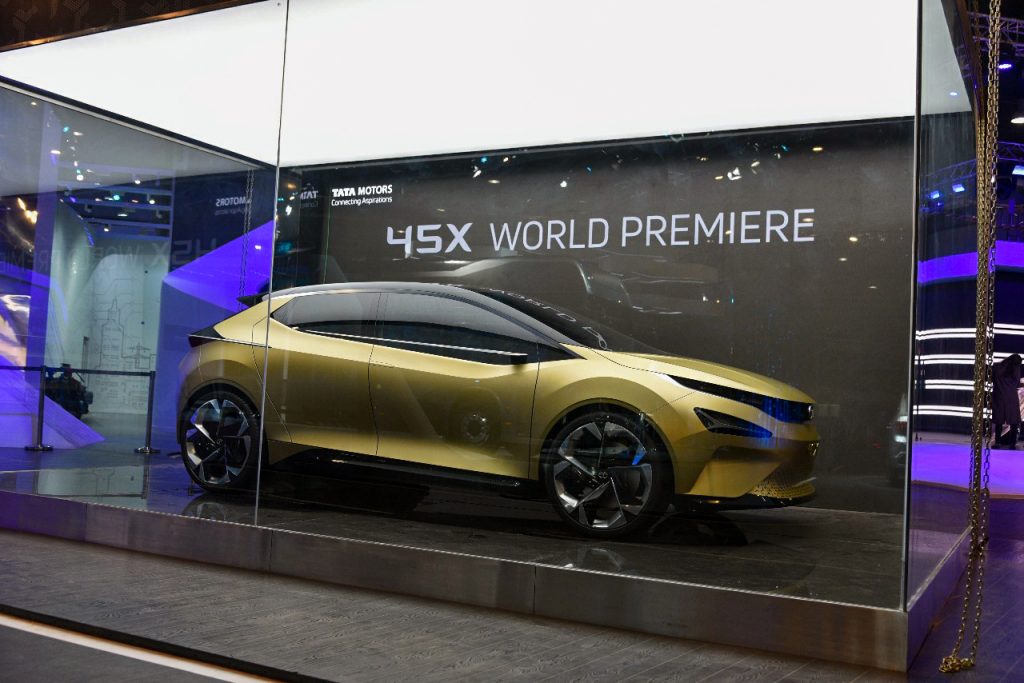Tata Motors has evolved a lot over the years. While they matured in terms of a brand, their cars seem to be getting younger. Just look at their recent lineup like the Punch, Altroz Racer, Nexon and Harrier, all of them seem to radiate this youthful vibe yet they are all sleek and muscular. Gone are the days when Tata cars used to have simple, barebones designs like the Sumo and Indica all thanks to Tata’s “Impact Design” philosophy.

Impact Design: What is it?
Impact Design is a philosophy introduced by Tata Motors back in 2014 that guides the design language of the brand’s passenger vehicles with the aim of giving them a bold, youthful and stylish look. This philosophy is integrated down to the vehicle’s core like the basic exoskeleton during the development stage to make sure the new car is aerodynamically efficient and carries a unique design element. Vehicles like the Zest, Hexa and Nexon were using this design language.
The Impact design language is applied to both the outside and inside of the car. That is the reason why Tata uses the terms “expressive” and “extraordinary” for the outside and “inviting” and “intelligent” for the inside. Furthermore, it also focuses on the practicality and general ambience of the cabin.
Tata introduced Impact Design 2.0 in 2018 which takes a lot after the OG Impact design philosophy. Pratap Bose (ex-head of Design, Tata) aimed to design future Tata cars to be “clutter-free” and easy to use. This updated design language has been used in cars like the new-gen Tiago, Punch, Harrier and Nexon. When Harrier launched, it was the talk of the town due to its bold and muscular look, especially in black colour which made even the Creta appear puny.
Beyond Impact Design 2.0
Since Impact Design 2.0, Tata has better and more aesthetically pleasing vehicles which has attracted more buyers of different ages. This design philosophy ensured stylish design while maintaining a robust and safe structure. In fact, Safety was one of the major points of Impact 2.0. The Nexon was India’s first car to score 5 stars in the GNCAP crash test followed by Altroz which also received 5 stars. Meanwhile, the Tiago and Tigor receive 4 stars. The Harrier and Safari both scored BNCAP crash test.

Tata Motors is now ready to take Impact Design 2.0 to another level. Indeed this strategy has been working for years now with many successful models and Tata Motors’ current SUV lineup especially the Harrier and Safari flagships seems to appear quite muscular when compared to competitors like the Creta and Grand Vitara. Well, according to Martin Uhlarik, Head of Global Design of Tata Motors, the design team has been readying the products to stand on equal footing with other cars in the global market while keeping in mind what the Indian audience wants since Tata Motors is primarily an Indian car company and the brand takes a lot of pride in it (That’s why we love Tata!).
The design philosophy is just part of the full picture. What also played a big role in Tata’s newer and more stylish design language is its young team of designers. The company wanted to capture the spirit of the younger buyers and here the design team of almost 240 people came into play. A team with members who are mostly around 30 years old helps bring fresh and innovative design ideas since they understand the young audience better. Diversity in the team also played a major role in bringing new and different ideas and taking the design philosophy forward. With the company’s studies in India, Italy and the UK with 12 nationalities working together, Uhlarik describes this as Orcestra.
Tata Motors also started the “Persona” based approach with the trims which are seen in a horizontal format rather than a vertical form. Without the traditional hierarchy of trims, customers get more flexibility in choosing the variant they want without stressing their budget since cars nowadays represent the buyer’s personality.
After all, first impressions matter and Tata Motors knows this very well. This is reflected in their car models, each one of them having a unique design element that makes them look muscular and youthful. Models like the Harrier and Safari are quite the attention seekers on the road while even the Altroz, Punch and Nexon will make some people look at them twice and this can be very much seen by how well all of these models are performing in sales.
Frequently Asked Questions (FAQs)
What is the Philosophy of Tata Design?
Tata’s design philosophy is called “Impact Design”.
What is the term “Design Language”?
Design Language is essentially a guide that car designers follow when designing a car or a car lineup.
Who is the Tata Motors Design Head?
Martin Uhlarik.

